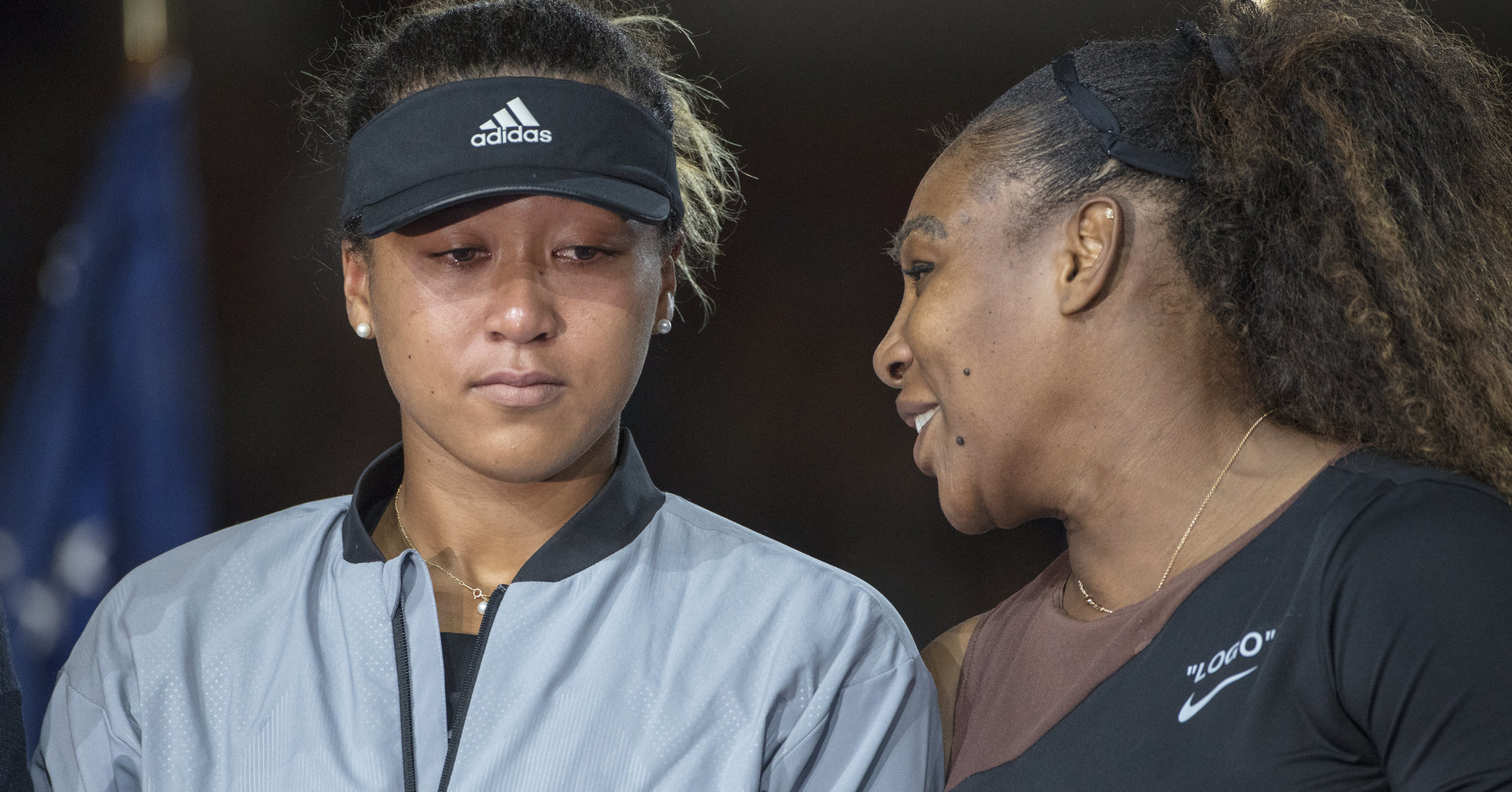[ad_1]

They don’t know what to do with Naomi Osaka.
In a cartoon he drew for Australia’s Herald Sun on Sept. 10, illustrator Mark Knight depicts Serena Williams during the finals match at the U.S. Open Tennis Championships. It’s a classic racist caricature: Williams appears as a hulk-like figure with unkempt hair and large lips reminiscent of the minstrel or the mammy.
Behind Williams is her competitor, Naomi Osaka. Her appearance has been distilled down to its lowest-common-denominator characteristics: light skin, slim frame, blonde hair. She might as well be Maria Sharapova.
Caricatures, by their nature, are meant to distort and exaggerate. But they’re also meant to be symbolic, representative; short-hand for a concept or idea.
Here, the narrative is clear: Williams has been cast as the big, ugly, angry black woman. Osaka, by contrast, has been cast as the innocent white girl, even though she’s not even white.
Many tennis fans have pointed out that Carlos Ramos’ petty umpiring robbed both Williams and Osaka of what should have been a far less controversial match. But Osaka was robbed of something else: her agency, her identity, her story, and her blackness.
In interviews, Osaka has been adamant about embracing both her Asian and black heritages, conceding that while she represents Japan in sporting events, she doesn’t identify solely as Japanese. She proudly reps her Haitian side.
Yet Osaka’s biracial identity is inconvenient in a racist narrative that turns Williams into a stereotype. It’s more expedient to focus on all the things about her that aren’t stereotypically black: her light skin, her soft-spoken nature, her tear-filled apology after winning the match. In this way, Osaka is framed if not as a white woman, then as a more acceptable and palatable version of blackness ― as the type of black person that doesn’t make you acknowledge their blackness.
But there are actually two narratives at play here. There’s the one in which Osaka is reduced to a silent and silenced victim; tearful; not quite white, but not black either. Reporters ask her whether Williams’s “behavior” made Osaka lose respect for her, reinforcing coded stereotypes that have everything to do with colorism, model minority myths and the culture’s implicit hatred of black women like Serena Williams.
And then there’s this other, opposing, well-meaning narrative that paints Williams as a feminist crusader, fighting for women’s rights and against double standards in a sport that most definitely has treated her unfairly on the basis of both race and gender in the past.
In the case of her match with Osaka on Saturday, Williams’ actions, the way she broke that racket, the way she demanded respect from the umpire, all serve to remind people of all the times she was forced to smile and grit her teeth at arbitrary clothing regulations, or frequent random drug tests, or racist slurs and boos from certain tennis audiences.
I’ve struggled with this narrative, too, because while it is important and valid in so many respects, it’s also an oversimplification of what happened during that match.
Because what happened during the match wasn’t solely political. It was deeply personal. It was human drama played out for millions of people. It was bigger than any narratives we can thrust upon it. The cartoon, the headlines ― they’re all in keeping with a consistent and collective inability in the culture to see black women as complex and capable of expressing myriad emotions, from rage to joy to despair. Or to allow two black women to reach for excellence at the same time.
Knight’s cartoon is what happens when we flatten whole human beings into types, when the story and its narratives become far more important than the nuance. In the process, racist and sexist assumptions are perpetuated and we strip people of their right to be weak and strong, of the totality of their humanity.
Here is the bottom line: On Saturday, two talented tennis players ― one black, one Japanese and black ― played a deeply emotional game, and those emotions came brimming to the surface for a whole host of reasons.
But it wasn’t a matter of villain and victim, good and bad, black and white. Williams is an icon, a legend. And she’s a fallible and whole human being. Just as Osaka is more than just Japanese, more than tearful and endearingly apologetic. She’s a fierce competitor with a distinct personal history, not a symbol of acceptable blackness to weaponize against Williams.
Indeed, she is many things, but what perhaps matters most is who she sees herself as, especially on the court:
“I’m just a tennis player playing another tennis player,” Osaka explained after she accepted her trophy.
It would be nice if Knight, and every other person who attempts to shape the way we will perceive this match moving forward, could remember that.
[ad_2]
Source link

